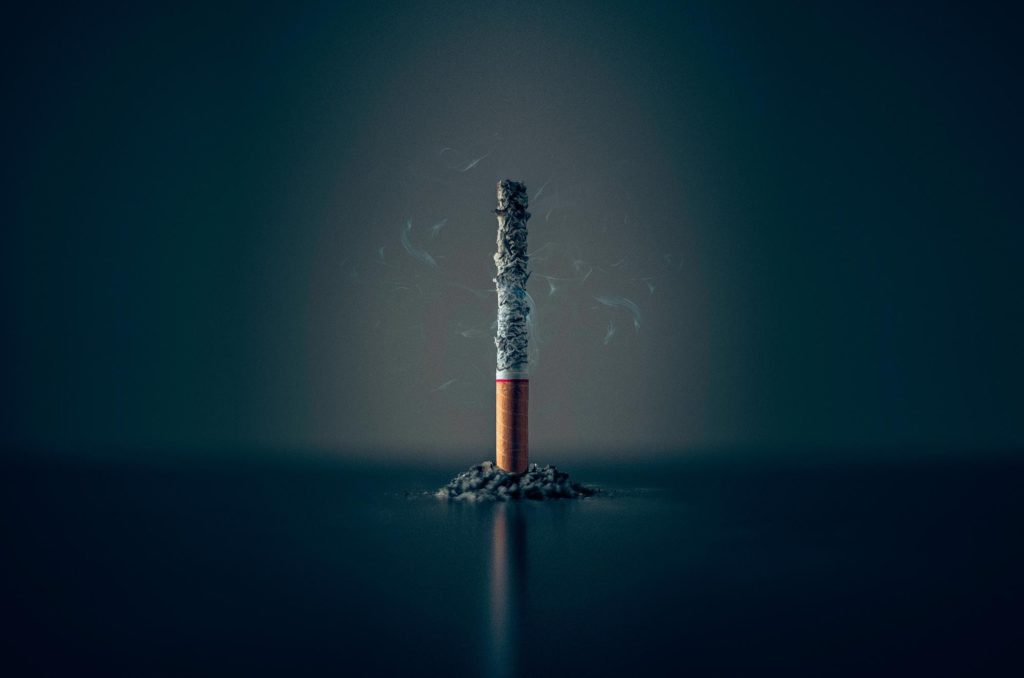Cigarette smoking remains the leading cause of preventable death and disease in the United States, accounting for nearly half a million deaths each year. Although the health consequences of cigarette smoking are widely known, data show that 34.2 million adults in the United States still smoked cigarettes in the past year.
Smoking cessation is the process of quitting smoking. Smoking cessation can feel like a daunting task, whether you’re quitting for the first time or the tenth time. According to a 2015 study, relapse after cessation is common, and approximately 75 percent of people who quit smoking end up giving in to the habit again. However, with the right smoking cessation plan and support system, it’s possible to stop using tobacco products for good.

What happens when you quit smoking?
Within 24 hours of smoking your last cigarette, you’ll experience wide-ranging health benefits. The longer you abstain from tobacco use, the more your health and quality of life will improve. Whether you’re a heavy smoker or only smoke a few cigarettes a day, it’s never too late to quit smoking.
According to the United States Centers for Disease Control, some health benefits you’ll experience after overcoming nicotine dependence include:
- After 20 minutes, your pulse and blood pressure decrease, and the temperature of your feet and hands increases.
- After eight hours, your blood oxygen levels increase, and the carbon monoxide levels in your blood return to normal.
- After 24 hours, your risk of having a heart attack decreases.
- After three months, you have improved exercise tolerance, and your circulation improves.
- After 1–9 months, your energy levels increase, you’ll experience less shortness of breath, and your cilia will regrow, improving your lungs’ ability to clean themselves.
- After one year, your risk of heart disease and cardiovascular disease decreases to half that of current smokers.
- After 10 years, your risk of lung cancer drops to the same rate as someone who has never smoked.
Side Effects of Nicotine Withdrawal
Nicotine dependence affects all areas of your body, from your heart and hormones to your brain. After quitting smoking, you’ll go through nicotine withdrawal, which involves intense physical and psychological nicotine cravings. Some side effects of withdrawal include:
- Increased appetite, which may lead to weight gain
- Intense nicotine cravings, which last approximately 15–20 minutes
- Sleeping problems, such as fatigue and insomnia
- Dry mouth/throat and coughing that lasts for weeks as your lungs clean themselves
- Nausea, constipation, gas, and stomach pain
- Depressed mood and irritability
Treatment Options for Nicotine Dependence
Most experts advise against quitting cold turkey, as it’s usually significantly less effective than tobacco cessation aids. Instead, it’s best to use a combination of tobacco cessation medications, therapy, and nicotine replacement therapy (NRT) to reduce nicotine cravings and stay motivated. Some helpful interventions for nicotine addiction include:
- Talk therapy. Research has shown that cognitive-behavioral therapy (CBT) effectively works in combination with medications like Chantix or nicotine replacement therapy. Counseling can help smokers prepare to quit, understand their triggers, and stay motivated throughout the process.
- Hypnotherapy. Studies have shown that clinical hypnosis, in which a hypnotherapist guides a person to enter a more focused state of attention and then introduces new ideas, can help certain people quit smoking and has multiple benefits.
- Nicotine replacement therapy. Ask your healthcare provider about different forms of NRT, including patches, lozenges, inhalers, gum, and nasal sprays. NRTs begin on your quit date to help you manage cravings and overcome nicotine dependence.
- Medication. In addition to nicotine replacement therapy, non-nicotine medications can help reduce nicotine withdrawal symptoms by mimicking the functions of nicotine in your body. According to the United States Food and Drug Administration (FDA), treatment with non-nicotine medications, such as varenicline (Chantix), should start 1–2 weeks after your quit date.
- Social support. Talk to your friends, family members, or a support group for support managing cravings and side effects. Call the free quitline at 1–800-QUIT-NOW (800-784-8669) for behavioral support and telephone counseling if you need additional support.
- Self-help materials. If you’re thinking about quitting cold turkey, self-help materials for tobacco users can help you determine the best way to avoid triggers and deal with side effects. Medical journals show that, when quitting cold turkey, self-help materials are associated with a higher abstinence rate than no intervention.
Therapy for Smoking Cessation
Especially in the absence of nicotine therapy or smoking cessation aid, you’ll need a comprehensive quit plan and a robust support system to quit smoking on your own. Ultimately, with more resources in place—social support, NRT, medications, behavioral counseling—you’ll be able to boost the success of your quit attempt and quit smoking for good.
To find a therapist, reach out to a mental health professional through WithTherapy. We’ll connect you to someone you feel comfortable with, regardless of your personal preferences and requirements. One of our qualified mental health professionals will help you cope with symptoms of nicotine withdrawal, overcome nicotine addiction, and live a more fulfilling life.



